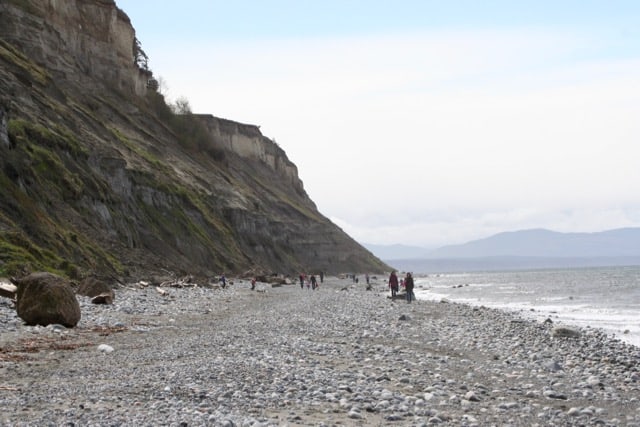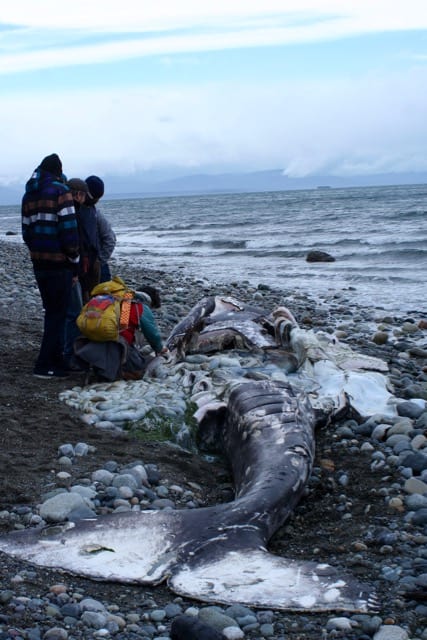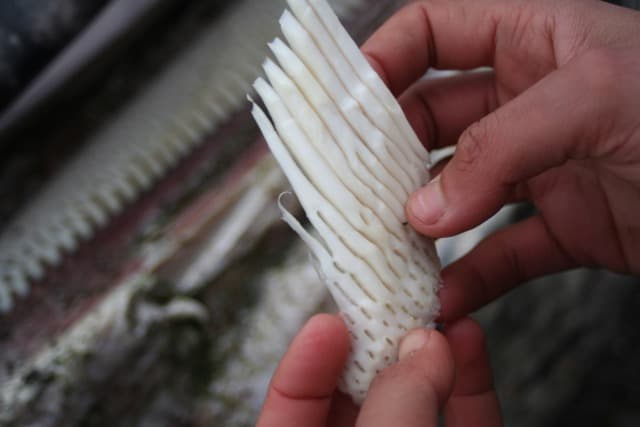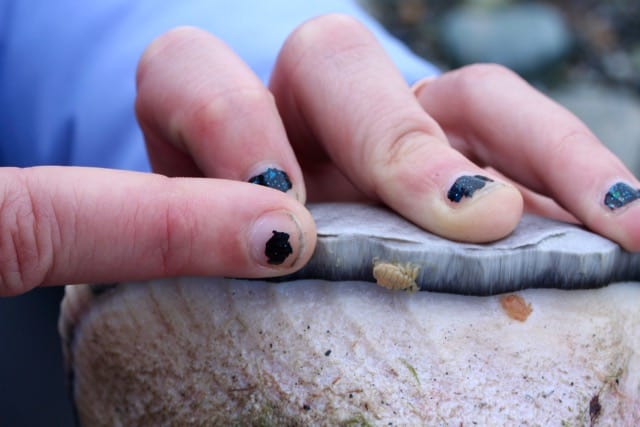
The Gray Whale that Washed Ashore Whidbey Island
April 7, 2018
Our intentions were clear. All of the people accompanying us on the windy beach this afternoon had one mission in mind: to follow the calving cliffs of glacial sediment along Whidbey Island to see the carcass of a 30-foot long gray whale that had washed ashore a few days prior. Word spread quickly in the small island community, and all were prepared with cameras and kids in tow.
When we arrived on the blustery morning of Saturday the whale was in pieces. Thick layers of blubber were stripped back, exposing the internal organs. This whale was female. She washed up on Whidbey Island a few days prior and was dismantled through a scientific necropsy performed by Cascadia Research Collective in Olympia. Upon learning of the stranding of the whale carcass, a small group of graduate students and staff from the North Cascades Institute made it out to the island to visit and learn more about the whale in person.

We were led by Matthew Klope, long-term resident of Whidbey Island and biologist with the Navy. Matt now serves as the Board President of the Deception Pass Park Foundation, an educational organization that works in partnership with Deception Pass State Park, which is how I met him. Matt’s enthusiasm for the coastal Puget Sound ecosystem and its many migratory fauna was contagious, and we eagerly followed his ebullient character along the beach and towards the whale, stopping to chat with nearly every passerby, all of whom knew Matt on a first-name basis.
Matt had participated in the Cascadia Research Collective necropsy along with 15 other people the day before, and was eager to check on the carcass each day to record its decomposition by waves, wind and tides. The necropsy team had worked on the whale for three hours, peeling back blubber and collecting samples from many different types of tissues for laboratory analysis to examine for possible disease and/or biotoxins. Participants in this necropsy, and the initial survey conducted by the Marine Mammal Stranding Network believed the whale died from starvation.
On average, 2-3 gray whales are stranded in the Puget Sound each year. When these animals wash ashore, it provides a rare opportunity for researchers to study them up close. During the necropsy, Matt cut out samples of the baleen for educational programming with the Deception Pass Park Foundation.
Gray whales are mysticetes, and use baleen to filter feed amphipods (small crustaceans) from the ocean floor. This often creates giant messy clouds of mud and sand as they push gallons of water and sediment through their baleen with their strong tongues.

We could not collect any samples of the whale (bones, etc.) because the carcass is under protection by the Marine Mammals Protection Act (MMPA). Under this law, it is illegal for any person to collect parts of the whale without an express permit. Once the carcass disassembles, it is legal to collect bones once they wash onto the beach separately from the whale body. Matt had collected 11 hairs from the chin of the whale (the “chinny-chin-chin”) – which was incredible to see!

Gray whales have two distinct populations on either side of the Pacific Ocean. There is a movement to delist the Eastern Gray whale populations from the Endangered Species List (first put on the list in 1970 when the ESA was first created). In 1994, the eastern population of North Pacific gray whales was delisted from the Endangered Species list, but the western north Pacific gray whale population (along the coast of Asia) remained on the list. Note that when this occured, the Marine Mammal Commission, an independent agency of the Executive Branch of the U.S. Government recommended the eastern population be downlisted to threatened, rather than delisted, causing some controversy. The Eastern gray whale continues to be federally protected under the Marine Mammal Protection Act. All populations of gray whales have been protected from commercial whaling since 1946. Today Washington hosts the migration of thousands of gray whales each year.

All in all, it was a powerful experience to see the stranded whale and learn about the great marine life in the Salish Sea that we are not all privy to witness. I have definitely gained a lot from this encounter, and look forward to my next experience in the coastal ecosystem.
Stranded marine mammals on Whidbey Island can be reported to the Orca Network at 360-661-3739 or Stranding Network Coordinator Sandy Dubper-nell at 360-678-3765.
Sources:

